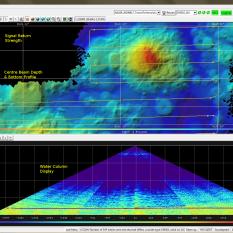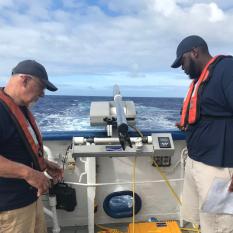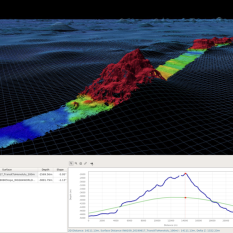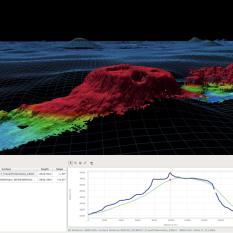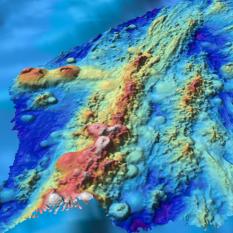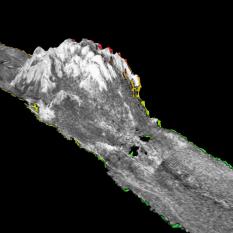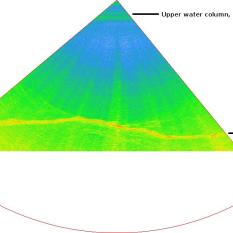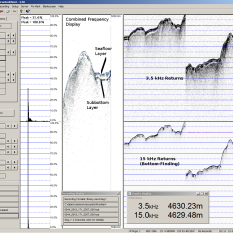Filling in the Gaps: Seafloor Mapping in Transit
Looking at maps of the ocean on programs like Google Earth, you may think that we know all there is to know about the shape of the seafloor--it certainly looks that way from afar. But while we might have a general idea of the highs and lows of deep-sea topography, these impressive-looking maps are mostly built by a sophisticated system of "connect-the-dots." The truth is that most of the area of the seafloor has no depth data at all. Without a better understanding of the nature of the seafloor, not to mention the countless ocean processes connected to it, it will be impossible for us to make informed and responsible decisions about managing and maintaining our planet. As the oceans cover most of the Earth’s surface, seafloor mapping is a key component of ocean--and planetary--exploration.
In an effort to gather this critical knowledge in time to make use of it, the Seabed 2030 project was launched by the Nippon Foundation and GEBCO with the goal of mapping 100% of Earth’s seafloor by 2030. While this task might seem daunting, it will be possible through global collaboration and a multitude of individual efforts. The wheels are already in motion, and the data gathered during the expeditions of Ocean Exploration Trust's Nautilus while mapping in transit and over targeted areas plays an integral part in meeting these goals for our future.
Learn more about the multibeam mapping system onboard Exploration Vessel Nautilus with this overview created by Seafloor Mapping Intern Marc Fortner. Mapping imagery processed using QPS software.

California Mapping
This expedition will continue previous years of mapping by Nautilus to provide the foundational seafloor mapping data set of a number of priority sites of Greater Farallones National Marine Sanctuary (GFNMS) and Cordell Bank National Marine Sanctuary (CBNMS). GFNMS protects 3,295 square miles, and the CBNMS encompasses 1,286 square miles of seafloor habitat, and achieving a better understanding of habitats in these regions helps to inform conservation and management.

Pacific Seamounts
This mapping expedition will focus on unmapped areas of the Pacific between San Francisco and Honolulu as E/V Nautilus operations move out into the Pacific Ocean between the Hawaiian Islands and Samoa. The transit route will utilize the multibeam echosounder and sub-bottom profiler to fill in gaps in seabed mapping coverage across the Pacific, plus targeted mapping of a number of seamounts in the vicinity of the Murray Fracture zone.

Pacific Seamounts
The expedition will focus on mapping from Honolulu to San Francisco, as the E/V Nautilus’ operations move back east to the US West Coast, in addition to the first deep water test of a new mobile ROV system. The mapping route has been planned to utilize the multibeam echosounder and sub-bottom profiler to fill in gaps in seabed mapping coverage across the Pacific.

